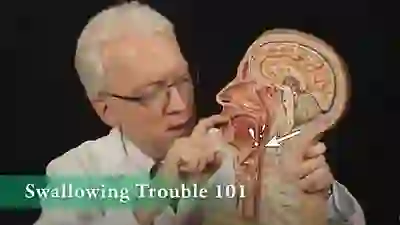Phases of Swallowing
The different phases that together make up the act of swallowing. Actually, swallowing is a rapid and seamless act, and dividing that act into distinct phases is somewhat arbitrary. But one simple scheme for the phases of swallowing, among many that have been codified, would be:
- Oral preparatory phase: food is masticated (chewed), mixed with saliva, and then “gathered” into a softened mass (called a bolus) between the tongue and palate.
- Oral transit phase: the bolus is sent posteriorly toward the base of the tongue. This sending of the bolus is a volitional (technically conscious) action, though it may be performed without really thinking about it.
- Oro-pharyngeal phase: the bolus arrives at the base of the tongue and triggers the swallow reflex, which is non-volitional, or automatic.
- Pharyngeal phase: the bolus travels down from the base of the tongue past the closed and elevated larynx and to the entrance of the esophagus. This is a continuation of the automatic swallow reflex.
- Esophageal phase: the cricopharyngeus muscle relaxes to allow the bolus into the upper esophagus, from where it is passed downward by waves of muscle contraction through the lower esophageal sphincter (LES) and into the stomach. All of the muscular action in this phase is also non-volitional.

Swallowing Trouble 101
This video gives an overview of how swallowing works, how it can sometimes go wrong (presbyphagia or cricopharyngeal dysfunction), and possible ways to treat those problems (swallowing therapy or cricopharyngeal myotomy).

Role of Sensation in Swallowing Function
A contrarian view is that mucosal sensation, by itself, is, in fact, relatively unimportant to swallowing function.
Tagged Anatomy & Physiology, Education, Videos